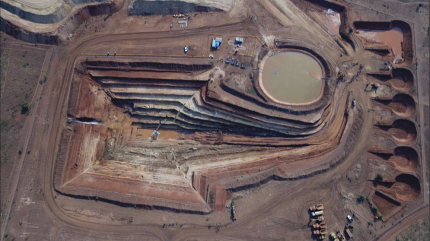
Canada really is the true north, strong and free — stretching from the Atlantic, to Pacific, to Arctic coasts. Incredible as these vast swaths of land are though, they do pose a power supply challenge for remote and rural communities.
“Most of them are off-grid, and so they don’t have access to as reliable and affordable energy as most Canadians,” says Heather Exner-Pirot, Director of Energy, Natural Resources and Environment at the Macdonald-Laurier Institute.
For context, there are approximately 200,000 people living off-grid in Canada. They are not connected to the national electric grid or natural gas distribution system, according to the Canadian Energy Centre.
Differing energy and supply options — which vary region-to-region across Canada — exemplify why a one-size-fits-all approach to energy policy doesn’t work, says Exner-Pirot.
Energy options are quite different in major cities like Vancouver, Calgary or Toronto compared to those on a reserve in Manitoba, a community in northern Nunavut, or even in Ontario’s cottage country or the Maritimes.
So what policies might work best for those in remote and/or rural areas? First, we need to understand what being “off-grid” means for those who live there.
These communities usually only have one energy source accessible to them (no diverse energy mix here). And often, it’s more expensive than other options available in more built-up parts of the country. “Affordability is probably their number one concern, where they do pay much more for energy,” says Exner-Pirot.
We know from our research that 20% of engaged women live in rural Canada, and that affordable, reliable energy is especially important to them. Their location tends to mean energy is more expensive for them, which significantly affects household budgets and quality of life.
Because access to power is more than just a nice-to-have. People need it for basic necessities (e.g., heating homes in freezing weather, cooking meals, connecting to the Internet and more). This makes it a human right, so it is necessary to tackle the energy supply and affordability challenges of remote and rural communities.
Energy supply challenges for remote/rural Canadians
Lack of access to electrical grids or natural gas distribution means people are usually relying on an energy source that can be brought in by truck or boat, which is often diesel, says Exner-Pirot.
On the plus side, diesel is very reliable and easy to store, even in cold weather, she says. “It is lucky that we have that option.”
But diesel, which is so abundant in Canada can still end up being expensive — depending on the global cost of oil and gas. And options for access to other sources of energy that might have lower emissions are simply not possible with existing infrastructure.
Then there are other places, for instance northern Saskatchewan, that only have access to electricity, which is much more expensive for home heating than natural gas, says Exner-Pirot. Also, there are reliability issues.
“They will suffer more from blackouts, or from service disruptions than most of us in urban centers do.”
And of course, both global events — like Russia’s war in Ukraine — as well as environmental factors like weather, cause supply chain uncertainty, which can particularly affect remote and rural energy.
Exner-Pirot shares an example of a spot in the Northwest Territories that is dependent on diesel, which must be delivered by ice road, saying they usually only have a two- or three-month window when the ice road is available.
“The ice roads have been taking a lot longer recently to freeze up…and the inability to use the ice roads for as long a season, and as early in the season as we used to be able to, is hampering all kinds of cargo issues.”
Solutions to power up remote/rural communities
Energy solutions across Canada are highly dependent on the terrain and geology of an area, says Exner-Pirot.
For instance, hydro is a great power option but for the most part has already been applied where possible, in remote parts of the country — not all regions of Canada have the right geological conditions or water supply to support hydro, she explains.
In many places where diesel is the main power and heat source, it’s often the only viable option, Exner-Pirot says. “There’s already been some kind of cost benefit analysis that the cost of building the transmission line or the pipeline to those communities is not feasible.”
“A lot of times the diesel is where you don’t even have road transportation.”
But then there are other, (slightly less remote) communities where alternative energy sources are possible, they just require an infrastructure investment.
“There are a lot of Indigenous communities who are advocating to get [natural gas], who want to provide that choice to their communities, again, because it tends to be a lot cheaper.”
Liquefied natural gas (LNG) transported by truck is also an option that some rural Canadians with road access — but no pipelines — are interested in pursuing, notes Exner-Pirot. As is a new clean technology that’s still in development: small modular nuclear reactors.
“They produce both heat and electricity. And basically they fit on the back of a semi…so they’re plug and play.”
Propane fuel is another “affordable, versatile, low-emissions energy source that has an important role in Canada’s evolving energy mix,” says the Canadian Energy Centre.
“There’s a significant reduction in C02 emissions with liquid propane and up to 100% reduction in heavy particulates. On top of that you have no risk of spills with propane,” notes Ben Tobber, CEO of Borealis Fuels & Logistics, in the Canadian Energy Centre article.
In a conversation about clean energy alternatives, “you can’t rely on solar and wind as your only source of power generation, especially in communities that are darker, close to the Arctic Circle,” explains Exner-Pirot.
Exner-Pirot brings up one additional important point as well: reliability and affordability are key for not just consumers, but local economic growth as well.
“The lack of energy affordability affects everything,” she says. “You can’t have manufacturing, you cannot compete … to build any kind of traditional economic development.”
“For economic development, you need reliable power.”
Share This:




